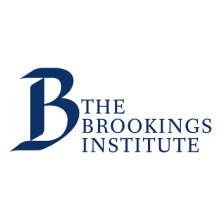In June of this year, the United Nations Conference on Trade and Development (UNCTAD) released its 2021 World Investment Report, in which it focuses on investing in a sustainable recovery from the pandemic. The report itself looks at how the COVID-19 pandemic impacted foreign direct investment globally and investment priorities for the recovery phase. The complex health and economic challenges created by the pandemic throughout the African continent have significant impacts on the foreign direct investment (FDI) both to and from the region. In fact, Africa’s share of total global FDI inflows for developing economies fell from 6.3 percent to 5.9 percent between 2019 and 2020 (Figure 1). Although FDI inflows were already on a decline, COVID-19 continued to have a negative impact on investment globally and regionally.
Figure 1. Foreign direct investment inflows, 2007-2009 and 2018-2020

Source: United Nations Conference on Trade and Development, World Investment Report. 2021.
Overall, FDI inflows to sub-Saharan Africa decreased by 12 percent between 2019 and 2020, but a few countries did see investments grow. In fact, Central Africa registered a consistent increase in FDI with inflows increasing to $9.2 billion from $8.9 billion. East Africa and southern Africa, on the other hand, saw 16 percent drops in inflows each since 2019. Notably, even within regions the impacts of the pandemic varied. For example, in West Africa, Ghana saw a 52 percent decline in FDI inflows in the year 2020—a drop from $3.9 billion to $1.9 billion; meanwhile, inflows to Nigeria slightly increased from $2.3 billion in 2019 to $2.4 billion in 2020.
FDI outflows were also impacted by the COVID-19 pandemic, but, again, varied across and within regions (Figure 2): According to the report, FDI outflows from Africa fell by two-thirds from $4.9 billion in 2019 to $1.6 billion in 2020. Notably, the highest outflows came from Togo, which, according to the report, were mostly to other African countries. For example, Togolese company Afrik Assurances opened financial services operations in Benin and Côte d’Ivoire during the pandemic. While Ghana saw a decrease in outflows, it still made up a significant percentage of total outflows from the continent. Another notable trend was the significant drop in outflow investment for southern Africa, which, according to the authors, is due to South African multinational enterprises repatriating capital from foreign countries.
Figure 2. Foreign direct investment outflows, 2007-2009 and 2018-2020

Source: United Nations Conference on Trade and Development, World Investment Report. 2021.
The report authors, overall, remain optimistic despite these drops. In fact, UNCTAD suggests that Africa will see a rise in both FDI inflows and outflows in the year 2021 with potential to reach pre-COVID levels in 2022. Notably, the report also suggests that the African Continental Free Trade Area and the Sustainable Investment Protocol (phase II of the AfCFTA) could boost FDI flows in the long term as well. In the long run, for a successful recovery, the authors stress increasing vaccine availability and call for international financial support, among other country-focused policies.


